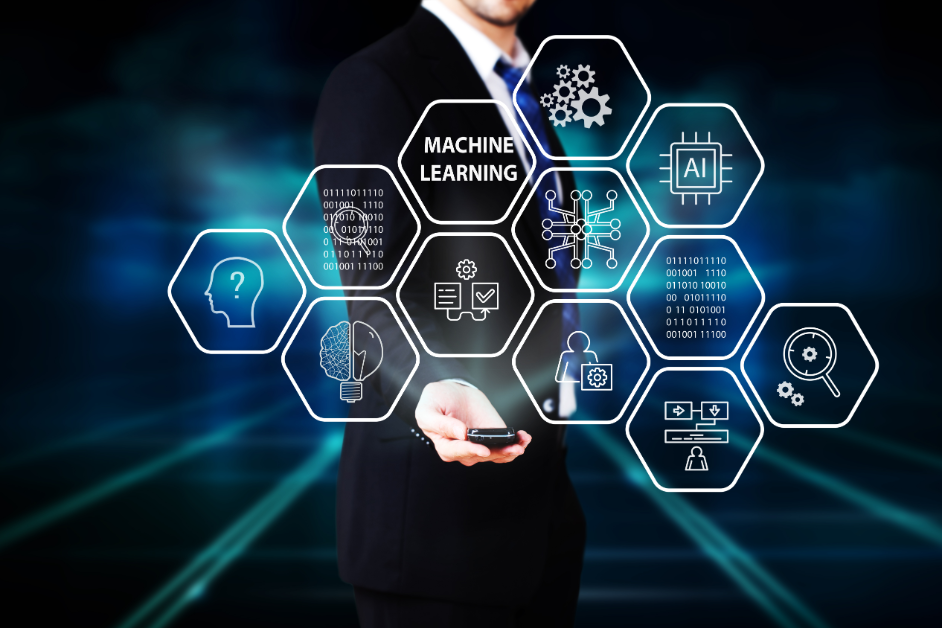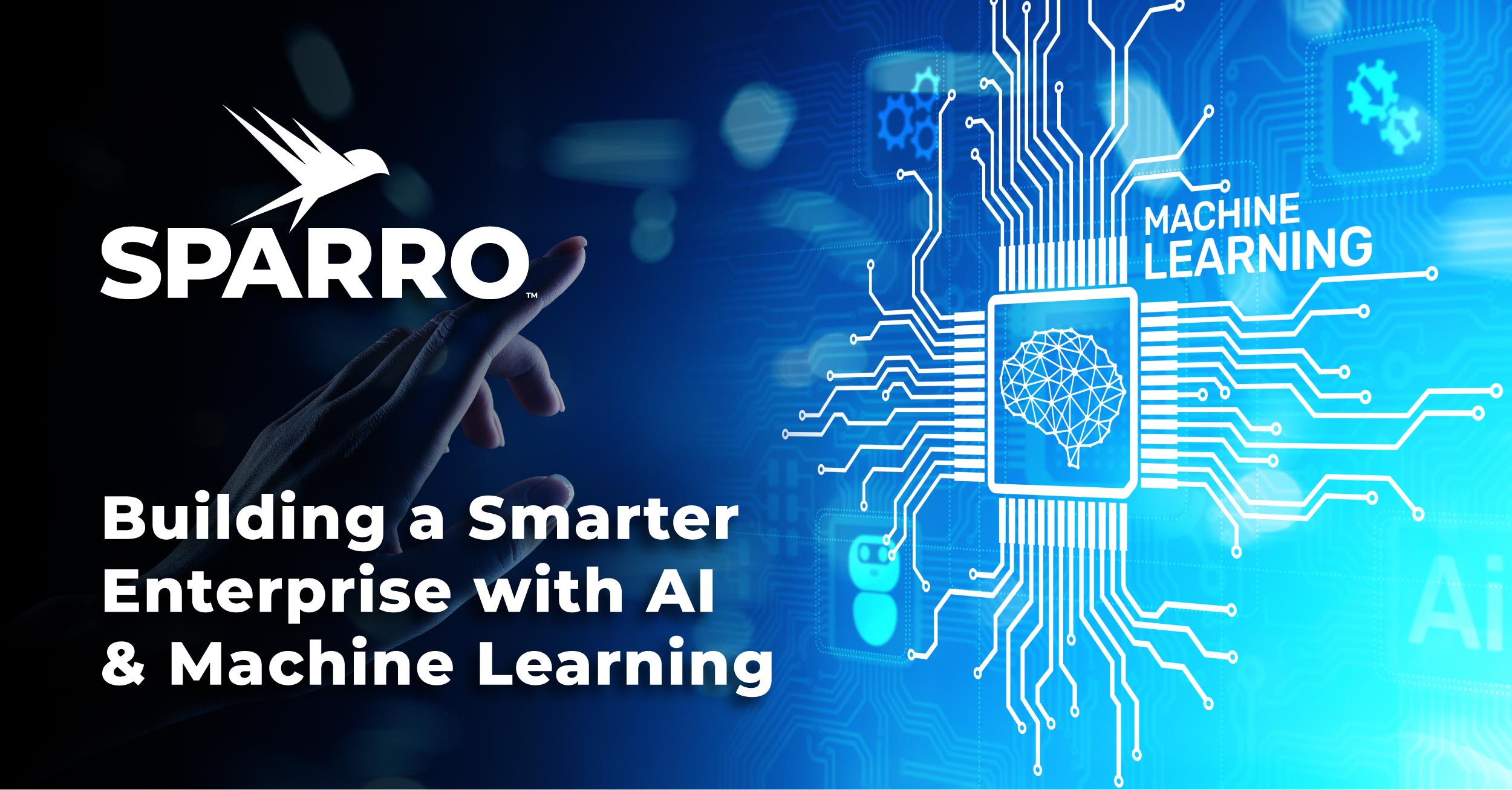Table of Contents
- What’s the Difference between AI and ML?
- Streamlining Operations with AI and ML
- Enhancing Decision-Making
- Driving Innovation
- How Sparro Can Help
- Ready to Get Started?
Artificial intelligence (AI) and machine learning (ML) are becoming integral to enterprise operations. AI adoption is accelerating globally, with 82% of companies worldwide now using or exploring AI. However, investment alone isn’t enough. For enterprise leaders, the priority is to leverage AI and ML to streamline operations, improve decision-making, and create opportunities for innovation.
What’s the Difference between AI and ML?
AI has become a buzzword in both business and popular culture, but discussions about ML have been less prevalent. However, while the two concepts are related and these terms are often used interchangeably, they aren’t exactly the same.
Artificial intelligence refers to computers’ ability to emulate human thought, analyze data, and solve problems. As a field of study, AI seeks to develop computers, robots, and other machines that can mimic or even surpass human problem-solving abilities. Key uses of AI include automating tasks, enhancing decision-making, and implementing chatbots to address simple customer queries.
Machine learning is a subset of AI encompassing the algorithms and technologies enabling computing systems to identify patterns, make decisions, and continually improve based on experience and data. In other words, ML refers to the methods used by AI to analyze data, solve problems, perform tasks, and achieve better results over time.
Streamlining Operations with AI and ML
Companies that have implemented AI and machine learning have seen significant benefits in streamlining operations and boosting productivity. For example:
- AI now writes 20-30% or more of code in some engineering teams at Microsoft and Google, drastically speeding up product development. Technology companies are also using AI agents to review code.
- Financial firms such as JP Morgan, Wells Fargo, and Citigroup are significantly increasing their AI usage and talent pools as they look to improve efficiency and eliminate drudgework.
- Consulting giants are also seeing real productivity boosts. McKinsey, BCG, Deloitte, and others report using generative AI to automate internal tasks like knowledge management and proposal writing.
Enterprises worldwide are employing AI and ML creatively to streamline operations, improve focus on core functions, and improve customer and employee experience.

Enhancing Decision-Making
AI can quickly analyze large volumes of data, enabling leaders to make decisions based on patterns, forecasts, and near-real-time insights. Examples include:
- According to recent industry reports, 70% of financial firms are using AI and ML to detect and combat fraud and other financial crimes.
- Energy companies like Duke Energy and National Grid are using AI and ML with IoT solutions to gain insights into energy use and performance, predict maintenance needs, optimize pricing, and ensure grid resilience.
- Applications of AI and ML in healthcare encompass biomedical research, treatment optimization, and clinical assistance, leading to more efficient trials and improved patient outcomes.
However, the implementation of AI and ML for decision-making warrants caution. For instance, studies show that users of generative AI tools often don’t check outputs before using them, potentially leading to inaccurate or biased decisions. Thus, enterprises need strong data governance, training, and human-in-the-loop processes to ensure that AI supports, rather than undermines, good decision-making.
Driving Innovation
AI goes beyond efficiency; it also fosters innovation. Surveys show that employees using AI view enhanced innovation as one of its key advantages. Examples of companies using AI to drive innovation include:
- Organizations such as Telstra and National Australia Bank are using AI to discover new ways to improve customer experience and boost productivity.
- Biotech firms like Recursion Pharmaceuticals and BenevolentAI utilize AI to accelerate the development of drug therapies for rare and complicated diseases.
- Mondelez International, the home of some of the world’s leading snack food brands, integrates AI into its tech stack for researching and developing new products.
AI and ML tools identify patterns and insights that drive new developments. They also free up time for employees by reducing the hours spent on repetitive tasks, enabling a greater focus on innovation. In addition, when teams use AI and ML, they can transform creative processes and accelerate product development, shortening time-to-market.
How Sparro Can Help
Sparro helps enterprise clients implement secure, scalable network and edge solutions that serve as the foundation for successful AI and ML deployment. With our expertise in private wireless, SD-WAN, and network observability, we can support AI use cases at the edge, in the cloud, or across hybrid environments.
We also help ensure your infrastructure is ready for intelligent traffic steering and high-throughput, low-latency connectivity – essential for real-time AI applications and analytics.
Ready to Get Started?
AI is here, and it’s not slowing down. Enterprises that apply AI and ML for intelligent business transformation will see real gains in productivity, speed, innovation, and customer satisfaction.
Let Sparro help you build the network, tools, and strategy you need to deploy AI with confidence. Contact us today to learn more.

